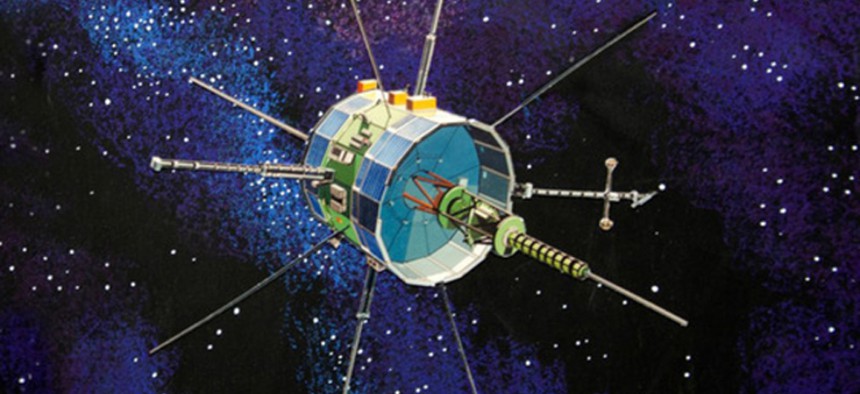NASA Has a New Plan to Save Its Zombie Spaceship

NASA illustration
A long-lost spaceship may still have some life left in it—if a California company can figure out how to talk to it.
NASA has a plan to save a satellite long given up for dead: Let the private sector take care of it.
The agency's groundbreaking ISEE-3 satellite is nearing Earth for the first time in 30 years, and while its instruments still appear to work, the communications equipment used to control it was scrapped years ago. The only reason we know it's still working is that someone forgot to send the "off" signal when it was scheduled to shut down.
ISEE-3's summer pass-by of Earth could provide the gravity needed to send it on another mission—otherwise it will just keep sailing around the sun. But NASA says it can't afford the resources needed to re-create the communications equipment it would need for such a maneuver.
Enter Skycorp.
The California company lobbied NASA to let it take a crack at talking to ISEE-3. On Wednesday, NASA announced it will give Skycorp a chance. The agency announced it "has shared technical data with these citizen scientists to help them communicate with and return data from ISEE-3."
Skycorp believes its radio telescope is capable of communicating with the satellite, and it wants the public's help in doing a job for which NASA lacks the funding. Crowdsourcing, the company says, will enable it to communicate with and control ISEE-3, while interpreting the valuable data it sends back.
ISEE-3 was launched in 1978, and it pioneered the technique of using a Lagrangian point (a place in Earth's orbit where gravitational pull is nearly balanced) to easily redirect itself. It also made flybys of a pair of comets, and has been slowly catching up to Earth in a solar orbit for the past three decades.
NASA hasn't had the transmitters to give it commands since 1999, but a 2008 check on its transmissions—which a scientist forgot to shut down years earlier—revealed that most of its instruments are still in good condition.
For more on the story of ISEE-3's journeys, read here.
NEXT STORY: Come on Feel the Data (And Smell It)


